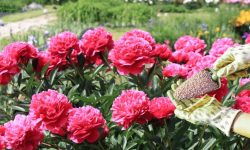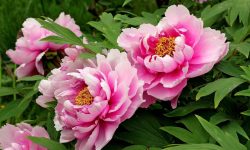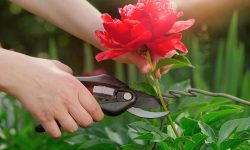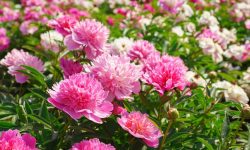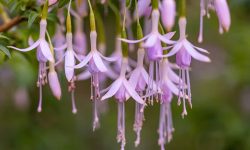Lavender is one of the most beloved herbs in the world, treasured for its calming fragrance, stunning purple blooms, and numerous uses in culinary, cosmetic, and medicinal applications. While many gardeners opt to grow lavender from cuttings or young plants, growing it from seed is an incredibly rewarding process. It allows you to experience every phase of your plant’s life cycle—from the first sprout to full flowering maturity.
However, growing lavender from seed does require patience, the right conditions, and a bit of know-how. If you’re just beginning your gardening journey, this guide will walk you through everything you need to know about how to plant lavender seeds, from choosing the right variety to caring for mature plants.
Understanding Lavender and Its Growing Requirements
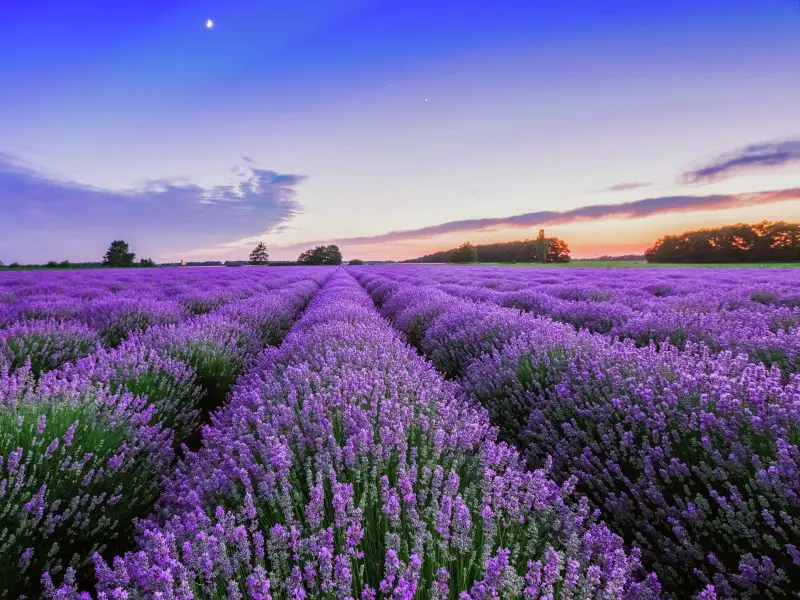
Before planting lavender seeds, it’s essential to understand what this plant needs in order to thrive. Native to the Mediterranean region, lavender enjoys warm weather, well-draining soil, and plenty of sunlight. These preferences should be replicated as closely as possible, especially if you’re planting in a climate that’s colder or wetter.
Types of Lavender You Can Grow From Seeds
Not all lavender varieties grow equally well from seed. While many cultivars are best propagated via cuttings, there are a few that germinate reliably and grow into healthy, productive plants. English lavender (Lavandula angustifolia), such as the ‘Munstead’ or ‘Hidcote’ varieties, is one of the best choices for seed growing. These types are hardy, aromatic, and well-suited for temperate climates.
French lavender and Spanish lavender tend to be more difficult to grow from seed and are better suited to propagation through cuttings. For beginners, starting with a proven seed-friendly variety is the best path to success.
Preparing for Success: What You’ll Need
A successful lavender planting journey begins with preparation. Having the right tools and materials from the start can significantly improve your chances of germination and strong plant development.
Choosing the Right Soil and Containers
Lavender thrives in well-draining, slightly alkaline soil. A sandy or gritty potting mix is ideal. If your garden soil retains too much water, consider amending it with coarse sand or perlite to improve drainage. You can also create your own mix using two parts potting soil, one part sand, and one part perlite or vermiculite.
For starting seeds, small seed trays or shallow containers with drainage holes work well. Peat pots or biodegradable containers are also excellent options because they can be planted directly into the ground later, reducing transplant shock.
Providing Light and Temperature Control
Lavender seeds require light to germinate, so you should not cover them with soil after sowing. In terms of temperature, lavender seeds germinate best between 65°F and 75°F (18°C to 24°C). If you’re planting during the cooler months or in a climate with fluctuating temperatures, consider using a heat mat to maintain warmth.
Grow lights can also help if you lack sufficient natural sunlight, particularly during early spring.
Step-by-Step Guide to Planting Lavender Seeds
Now that you’ve gathered your materials and created the ideal environment, it’s time to start planting. This process requires care and attention, but the reward is worth the effort.
Step 1: Stratify the Seeds
Lavender seeds have a relatively low germination rate and benefit from a process called cold stratification. This mimics the natural dormancy period they would experience during winter in the wild.
To stratify, place the seeds in a damp paper towel and seal them inside a plastic bag. Store this bag in the refrigerator for about 3 to 4 weeks. This chilling period helps break seed dormancy and encourages more successful germination.
Step 2: Prepare Your Containers
After stratification, prepare your seed trays or containers by filling them with your chosen potting mix. Lightly moisten the soil, but do not soak it. Smooth out the surface so that seeds can sit evenly without sinking too deeply.
Step 3: Sow the Seeds
Gently place the seeds on top of the soil, spacing them evenly across the surface. Since lavender seeds need light to germinate, do not bury them. Instead, press them lightly into the surface to ensure contact with the soil while allowing light to reach them.
Mist the surface lightly with water to settle the seeds into place without disturbing them.
Step 4: Maintain Ideal Conditions
Place your containers in a warm, bright area where they will receive at least 6–8 hours of indirect sunlight daily. If you’re using grow lights, position them a few inches above the surface and keep them on for 12–14 hours per day.
Ensure that the soil stays consistently moist but not waterlogged. Using a spray bottle to mist the surface daily is usually sufficient. Be patient—germination can take anywhere from 2 to 4 weeks, and sometimes longer.
Caring for Lavender Seedlings
Once your seeds sprout, they enter a delicate growth phase where they are most vulnerable. Providing gentle but consistent care during this time is key to developing strong, healthy plants.
Managing Light and Airflow
As seedlings grow, it’s important to provide them with plenty of light. If your natural light is limited, continue using grow lights to supplement. Also, make sure that air can circulate around the seedlings. This helps prevent fungal diseases and encourages sturdy stem development.
Avoid overcrowding by thinning weaker seedlings once the plants have grown a few sets of true leaves. This ensures that the remaining plants have ample space and resources to grow.
Watering and Feeding Young Plants
Water seedlings carefully, avoiding overwatering at all costs. Allow the soil surface to dry slightly between watering sessions. Once your lavender seedlings have developed 2–3 sets of leaves, you can begin feeding them with a very diluted liquid fertilizer every two weeks.
Make sure the fertilizer is gentle and appropriate for herbs or seedlings. Avoid high-nitrogen formulas, as they encourage leafy growth at the expense of flowers and fragrance.
Transplanting Lavender Seedlings
When your seedlings are 3 to 4 inches tall and the risk of frost has passed, they are ready to be transplanted outdoors or into larger containers.
Hardening Off the Plants
Before transplanting, acclimate your seedlings to outdoor conditions through a process called hardening off. Start by placing them outside for an hour or two each day, gradually increasing the time over 7–10 days. This helps them adjust to temperature fluctuations, wind, and sunlight without shock.
Choosing the Right Planting Location
Lavender needs full sun—ideally 6 to 8 hours of direct sunlight each day. Select a well-draining site with sandy or loamy soil. Avoid areas that retain moisture, such as low spots or near downspouts. Raised beds and garden mounds can help improve drainage if your native soil is heavy.
Dig a hole slightly larger than the root ball, place the seedling in, and gently backfill with soil. Water lightly to settle the soil, but don’t overdo it.
Maintaining and Enjoying Your Lavender Plants
With your lavender plants settled into their final location, the most enjoyable part begins: watching them grow, bloom, and transform your garden.
Pruning and Shaping
To keep your plants healthy and full, regular pruning is essential. Start pruning in the spring once new growth appears. Remove any winter-damaged stems and shape the plant to encourage bushier growth. Avoid cutting into old woody stems, as lavender does not regenerate well from old wood.
In the summer, after the first bloom, a light trim can encourage a second flush of flowers. Always use clean, sharp shears when pruning.
Harvesting and Uses
When flowers are in full bloom, you can begin harvesting lavender. Cut stems in the morning when essential oils are most concentrated. Bundle and dry them for use in sachets, teas, oils, or culinary dishes. Fresh lavender also makes a beautiful bouquet.
The more you harvest, the more you encourage new growth and flowering.
Overwintering and Long-Term Care
If you live in a colder climate, protect your lavender during the winter months. Mulch around the base with straw or evergreen boughs to insulate the roots. If grown in pots, consider bringing the containers indoors or into a sheltered area such as a greenhouse or garage.
With proper care, lavender plants can live and thrive for many years, bringing beauty, fragrance, and pollinators to your garden.
Frequently Asked Questions About Planting Lavender Seeds
How long does it take for lavender seeds to germinate?
Lavender seeds typically take between 14 to 30 days to germinate, depending on the variety and growing conditions. Some may take up to 40 days, especially without proper cold stratification. Keeping the temperature between 65°F and 75°F and ensuring adequate light can help speed up the process.
Do lavender seeds need to be stratified before planting?
Yes, cold stratification is highly recommended for lavender seeds. This process involves placing seeds in a damp paper towel inside a plastic bag and refrigerating them for 3 to 4 weeks. Stratification improves germination rates by mimicking the natural winter cycle lavender seeds would experience outdoors.
Can I plant lavender seeds directly in the garden?
While it’s possible, it’s not ideal for beginners. Direct sowing often results in low germination due to temperature fluctuations, poor soil contact, and exposure to pests. Starting seeds indoors allows better control of temperature and moisture, giving seedlings a stronger start before transplanting.
What type of soil is best for growing lavender?
Lavender prefers well-draining, sandy, or loamy soil with a slightly alkaline pH. It does not tolerate heavy, clay-rich, or consistently moist soil. Amending soil with sand, gravel, or perlite helps improve drainage and mimics the plant’s natural growing environment.
How much sunlight do lavender seedlings need?
Lavender seedlings require plenty of bright, indirect sunlight. They should receive at least 6–8 hours of light daily. If you’re growing indoors or during the winter months, a grow light may be necessary to provide sufficient light and prevent leggy, weak growth.
When is the best time to transplant lavender seedlings outdoors?
Transplant your seedlings outdoors after the last frost date in your area, once they are 3–4 inches tall and have multiple sets of true leaves. It’s important to harden off the seedlings by gradually exposing them to outdoor conditions over the course of 7 to 10 days.
How often should I water lavender seedlings?
Lavender seedlings need moist but not wet soil. Water gently when the top layer of soil feels dry to the touch. Overwatering can easily lead to damping-off or root rot. As the seedlings grow stronger, gradually reduce watering to encourage drought tolerance.
Will lavender bloom in its first year from seed?
Some varieties, like ‘Munstead’, may bloom lightly in their first year, especially if started early indoors. However, most lavender plants grown from seed will not fully bloom until their second year, once they are more mature and well-established.
Can lavender grown from seed live as long as store-bought plants?
Yes, lavender grown from seed can live just as long—typically 10 to 15 years or more with proper care. In fact, starting from seed ensures a healthier root system from the beginning, which may make the plant more resilient in the long term.
Final Thoughts: From Seed to Bloom
Learning how to plant lavender seeds is a journey that combines science, patience, and a little bit of magic. While it may take longer than planting cuttings, the satisfaction of nurturing lavender from seed to bloom is truly unmatched.
By understanding the plant’s needs, providing the right environment, and caring for your seedlings diligently, you can enjoy the calming aroma and vibrant color of lavender in your own garden. For beginners and seasoned gardeners alike, growing lavender from seed is a deeply rewarding experience—and one that will enrich your home, garden, and senses for years to come.

